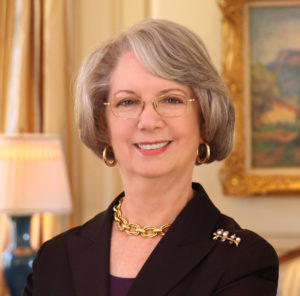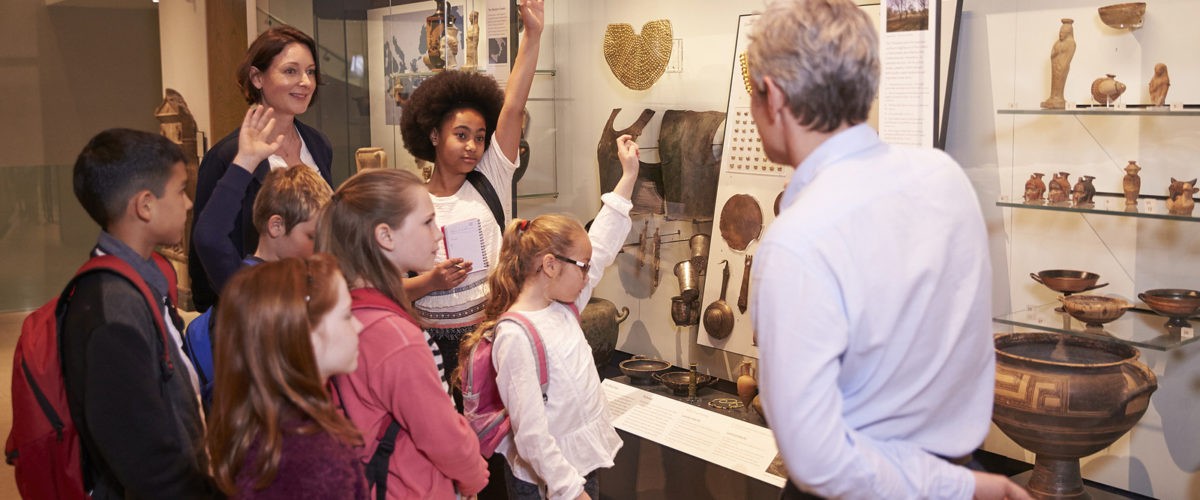A few weeks ago, the President made headlines at the National Archives Museum when he denounced the teaching of American history classes as a “left-wing cultural revolution … designed to overthrow the American Revolution” and responsible for everything from tearing down statues and burning flags to violence in our cities.
I always have loved history, especially the history of America, and I majored in history at Baylor University in the early 1960s. Trump is not attacking our history but the way we tell the story — the methods historians use in writing history. That’s historiography, which has been changing and evolving since the Greeks started writing history about 2,500 years ago.

Ella Prichard
As a student, I loved the grand narrative of “manifest destiny” and “westward expansion,” and I embraced the stories of the heroes, but I am not naïve. Our heroes had clay feet. Many of our grand Colonial and early Federal buildings, along with the columned Greek Revival mansions on Southern plantations, were built by slave labor and paid for with the profits that enslaved people earned for their white masters.
Westward expansion made heroes of the generals who oversaw the slaughter of Native Americans and the seizing of their lands. The American history of my youth was an incomplete story that celebrated the achievements of white men and hardly acknowledged either the suffering inflicted on others or the contributions made by them.
I don’t think President Trump is completely wrong. There has been overcorrection. Embracing a historiography that assesses history primarily through the filters of race, class and gender, too many historians also tell an incomplete story, one that focuses on sins and shortcomings rather than achievements and victories. Critique too often has replaced narrative.
But Trump goes too far. He is not calling for an objective telling of the whole American story; instead, he wants patriotic indoctrination: “Our mission is to defend the legacy of America’s founding, the virtue of America’s heroes and the nobility of the American character. We must clear away the twisted web of lies in our schools and classrooms and teach our children the magnificent truth about our country. We want our sons and daughters to know that they are the citizens of the most exceptional nation in the history of the world.”
He goes on to describe opportunity that is not available to everyone. “To grow up in America is to live in a land where anything is possible, where anyone can rise, and where any dream can come true — all because of the immortal principles our nation’s founders inscribed nearly two and a half centuries ago.”
“Today, much of the anger from the right and the left comes from people’s recognition that the American Dream is beyond their reach.”
Today, much of the anger from the right and the left comes from people’s recognition that the American Dream is beyond their reach.
“The radicals burning American flags want to burn down the principles enshrined in our founding documents, including the bedrock principle of equal justice under law,” Trump said. “In order to radically transform America, they must first cause Americans to lose confidence in who we are, where we came from and what we believe. As I said at Mount Rushmore … the left-wing cultural revolution is designed to overthrow the American Revolution.”
Connecting protests in the streets and the tearing down of statues to the teaching of American history in schools and singling out Marxism, historian Howard Zinn, critical race theory and the New York Times’ 1619 Project, Trump concluded: “The only path to national unity is through our shared identity as Americans. That is why it is so urgent that we finally restore patriotic education to our schools.”
Is it possible to have national unity and a shared identity — a shared story — when so much of the national discourse is divisive and aimed to appeal to a single class, race or religious group?
The Organization of American Historians responded to the president’s remarks, stating: “History is not and cannot be simply celebratory. Vibrant democratic societies are not built upon a foundation of selective depictions of the past, but rather demand critical examination of and grappling with the historical record. The best historical inquiry acknowledges and interrogates systems of oppression — racial, ethnic, gender, class — and openly addresses the myriad injustices that these systems have perpetuated through the past and into the present. We ignore such history at our peril.”
And that is where the arguments start.
“All of history is an argument.”
Historian and educator Susan Wise Bauer argues that “all of history is an argument,” that all historians have biases. Her advice to parents is helpful to all of us. Start with the basic facts, good and bad, of who, what, when and where; absorb the narrative — the sweeping story of America. Only then are we equipped for interpretation and critique. Critical thinking always starts with the facts.
Despite the fact that we all have biases, the goal must be to be as fact-based and objective as possible. Only when all the significant, relevant facts are in order (and that could be an argument, too) can the writer (or the reader) begin to analyze, critique and draw rational conclusions.
Whether writing from a conservative, patriotic perspective or from a more liberal point of view that focuses on race, class or gender, those who set out to prove a point will search for facts that support their argument and ignore or downplay those inconvenient facts that weaken it. Their “histories” often are little more than propaganda or indoctrination. But how widespread is that?
I checked with historians from two of our universities with Southern Baptist roots. They described their faculties as moderate, with a range of perspectives and styles, based on critical analysis of evidence, not rigid ideology. I suspect that is true at most American universities.
I am a product of pro-antebellum South, pro-Confederacy, pro-white supremacy textbooks used in public schools for at least three generations, which I mentioned in my first column for BNG. I was quickly re-educated in college, but I continue to struggle with the prejudices that completely permeated the culture I grew up in.
Trying to make sense of my family history, I recently read White Too Long: The Legacy of White Supremacy in America, by Robert P. Jones, and Dixie’s Daughters: The United Daughters of the Confederacy and the Preservation of Confederate Culture, by Karen L. Cox. Not only did the UDC’s version of Southern history pervade the Southern church, it won wide acceptance beyond the South as the nation sought healing and reunification after the trauma of the Civil War and Reconstruction.
That old narrative is badly outdated. With the internet, historians today have so much more access to historical documents than what was available even 30 years ago. That history needs to be rewritten, and historians need to tell a more accurate, complete story of America that includes the struggles and successes of all its people.
It’s not about erasing the old story; it’s about adding to it. There is room for multiple perspectives in an inclusive narrative of the building of America. We will be more unified when all Americans can see themselves and their families as part of America’s story.
Ella Wall Prichard is a journalism graduate of Baylor University who is known as a philanthropist and advisor to Baptist causes in Texas and beyond. A longtime member of First Baptist Church in Corpus Christi, she has served on committees and boards of the Baptist General Convention of Texas and the Cooperative Baptist Fellowship. She was a member of the Baylor Board of Regents and a director of the Baylor Alumni. Her book, Reclaiming Joy: A Primer for Widows, recounts the story of her husband’s untimely death and her suddenly finding herself the president of the family oil business.


